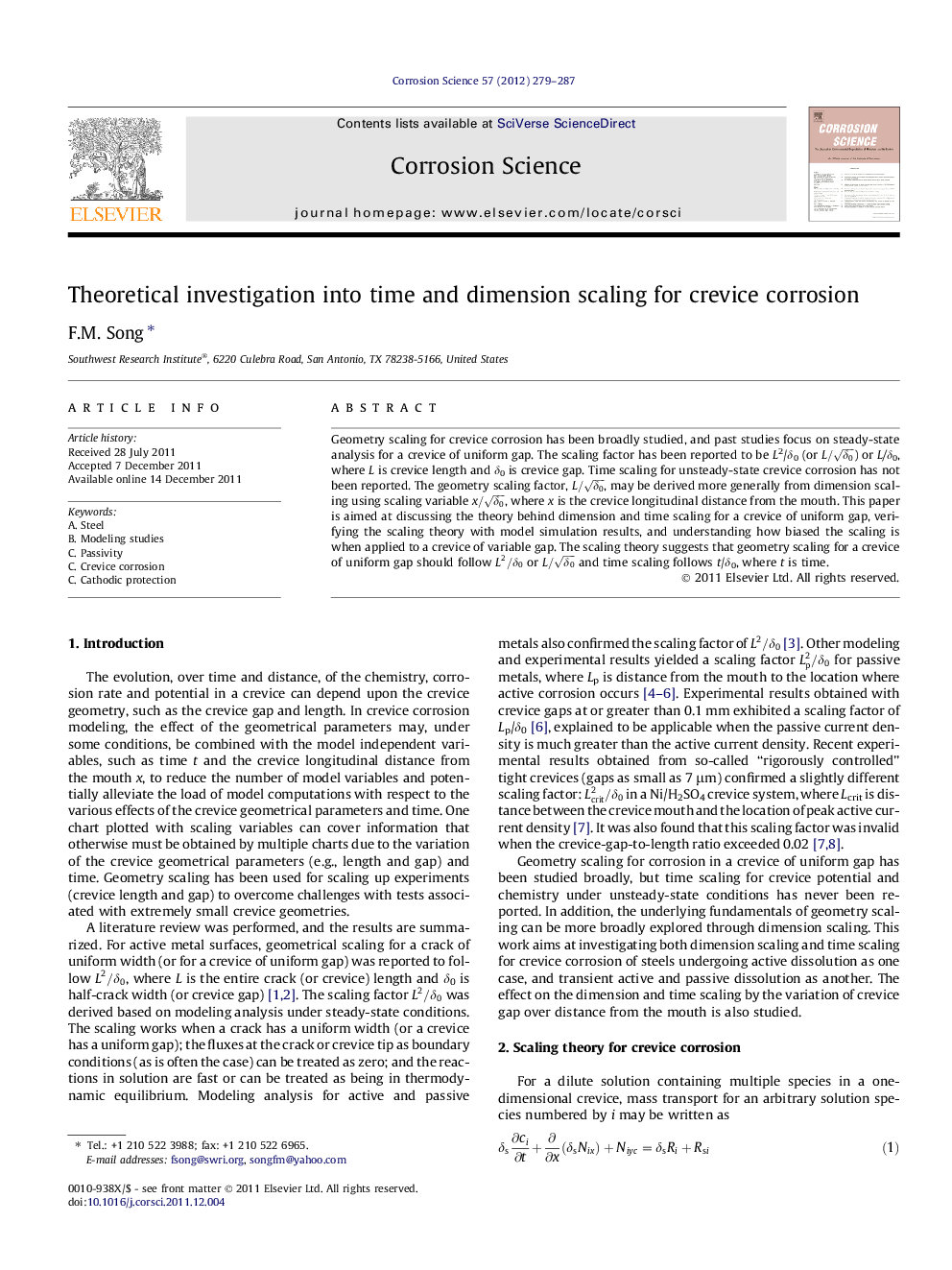| Article ID | Journal | Published Year | Pages | File Type |
|---|---|---|---|---|
| 1469645 | Corrosion Science | 2012 | 9 Pages |
Geometry scaling for crevice corrosion has been broadly studied, and past studies focus on steady-state analysis for a crevice of uniform gap. The scaling factor has been reported to be L2/δ0 (or L/δ0) or L/δ0, where L is crevice length and δ0 is crevice gap. Time scaling for unsteady-state crevice corrosion has not been reported. The geometry scaling factor, L/δ0, may be derived more generally from dimension scaling using scaling variable x/δ0, where x is the crevice longitudinal distance from the mouth. This paper is aimed at discussing the theory behind dimension and time scaling for a crevice of uniform gap, verifying the scaling theory with model simulation results, and understanding how biased the scaling is when applied to a crevice of variable gap. The scaling theory suggests that geometry scaling for a crevice of uniform gap should follow L2/δ0L2/δ0 or L/δ0 and time scaling follows t/δ0, where t is time.
► Geometry scaling and time scaling were theoretically studied for crevice corrosion. ► Both steady state and unsteady state crevice corrosion was considered. ► Fundamentals of the scaling were discussed and verified with modeling results. ► Merits and limitations of both geometry scaling and time scaling were discussed.
